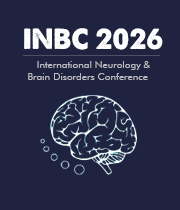Connectomics
Connectomics is a field of neuroscience that seeks to map the neural connections in the human brain. Through the use of powerful imaging techniques, such as magnetic resonance imaging (MRI) and diffusion tensor imaging (DTI), connectomics researchers are attempting to reconstruct the intricate networks of neural connections that underlie higher-order brain functions such as perception, cognition, and motor control. To date, researchers have achieved remarkable progress in mapping the brain's wiring, known as the connectome. Working from the micro- to macroscale, researchers have employed a variety of techniques to map both a host of established brain regions as well as those still not fully understood. For example, neuroscientists have developed sophisticated MRI techniques to image the brain’s white matter pathways. Through visualization of these pathways, scientists have been able to identify and trace various types of neural circuitry in the major divisions of the brain and to determine their relative importance. In the field of connectomics, researchers are also using advances in genomic sequencing and computational stimulators to map the brain’s neural circuits. Through these processes, they are creating large-scale databases of individual neurons and their connections. With this data, scientists are able to explore the structure and function of the human brain in greater detail than ever before. In addition, researchers are using new technologies to study how the brain changes in response to aging and environmental factors. By studying the effects of experience and development on connectomes, scientists may gain insight into the mechanisms of neurodegenerative disease and mental illness. The potential for connectomics is far reaching. It promises to revolutionize the way we understand, diagnose, and treat neurological disorders. By gaining a greater understanding of the brain’s wiring, researchers may unlock the mysteries of brain diseases such as epilepsy, autism, and Parkinson’s disease. Ultimately, connectomics may lead to treatments that will help restore normal brain function for millions of people.

Joe Sam Robinson
Mercer University, United States
Robert B Slocum
University of Kentucky HealthCare, United States
George Diaz
Memorial Healthcare Systems, United States
Daniel Curry
Texas Children’s Hospital, United States
Zhenhuan Liu
Guangzhou University Chinese Medicine, China
Kiran Ghotra
Lake Erie College of Osteopathic Medicine, United States




Title : Atypical presentation of Juvenile myoclonic epilepsy in a 16-year-old female: A Case Report
George Diaz, Memorial Healthcare Systems, United States
Title : What we don’t know about hydrocephalus and It’s management
Daniel Curry, Texas Children’s Hospital, United States
Title : Artificial intelligence-driven DWI and FLAIR for the detection of early stroke changes: A systematic review
Shari L Guerra, The Medical City, Philippines
Title : Mapping neuroplasticity in occupational therapy: Evidence-based interventions with measurable neural outcomes
Jessica Marchant, Texas Woman's University, United States
Title : Non-pharmacologic management of orthostatic hypotension in inpatient rehabilitation: A quality improvement initiative
Laura Steakin, Rehabilitation Institute at Sinai, United States
Title : Non-pharmacologic management of orthostatic hypotension in inpatient rehabilitation: A quality improvement initiative
Mackenzie Weber, Rehabilitation Institute at Sinai, United States